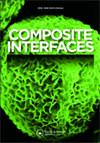水分子和氯离子在氧化石墨烯改性水泥复合材料中传输的分子动力学研究
IF 2.4
4区 材料科学
Q3 MATERIALS SCIENCE, COMPOSITES
引用次数: 1
摘要
本文章由计算机程序翻译,如有差异,请以英文原文为准。
Molecular dynamics study on the transport of water molecules and chloride ions in graphene oxide-modified cement composites
ABSTRACT The ability of composite cement materials to resist erosion by chloride ions is a critical factor in evaluating their dependability. This study aims to examine the influence of graphene oxide on the transportation of water molecules and chloride ions in modified cement composites. Molecular dynamics analysis suggests that graphene oxide can effectively bond to the substrate of hydrated calcium silicate gel pores, which forms a stronger confined fluid zone under the action of electrostatic interactions and van der Waals forces. Graphene oxide has negatively charged oxygen functional groups on its surface, and within a certain size range, it becomes more effective at restricting the penetration of water molecules and chloride ions. In addition, chloride solution immersion experiments were performed on graphene oxide modified cement mortar. The results demonstrated that a small quantity of graphene oxide can significantly improve the resistance of modified cement mortar to chloride ion erosion, whereas excessive amounts are detrimental, which aligns with the simulation results. It is hoped that this study will provide valuable insights into the use of graphene oxide nanoparticles in the corrosion protection of cement composites. GRAPHICAL ABSTRACT
求助全文
通过发布文献求助,成功后即可免费获取论文全文。
去求助
来源期刊

Composite Interfaces
工程技术-材料科学:复合
CiteScore
5.00
自引率
3.80%
发文量
58
审稿时长
3 months
期刊介绍:
Composite Interfaces publishes interdisciplinary scientific and engineering research articles on composite interfaces/interphases and their related phenomena. Presenting new concepts for the fundamental understanding of composite interface study, the journal balances interest in chemistry, physical properties, mechanical properties, molecular structures, characterization techniques and theories.
Composite Interfaces covers a wide range of topics including - but not restricted to:
-surface treatment of reinforcing fibers and fillers-
effect of interface structure on mechanical properties, physical properties, curing and rheology-
coupling agents-
synthesis of matrices designed to promote adhesion-
molecular and atomic characterization of interfaces-
interfacial morphology-
dynamic mechanical study of interphases-
interfacial compatibilization-
adsorption-
tribology-
composites with organic, inorganic and metallic materials-
composites applied to aerospace, automotive, appliances, electronics, construction, marine, optical and biomedical fields
 求助内容:
求助内容: 应助结果提醒方式:
应助结果提醒方式:


